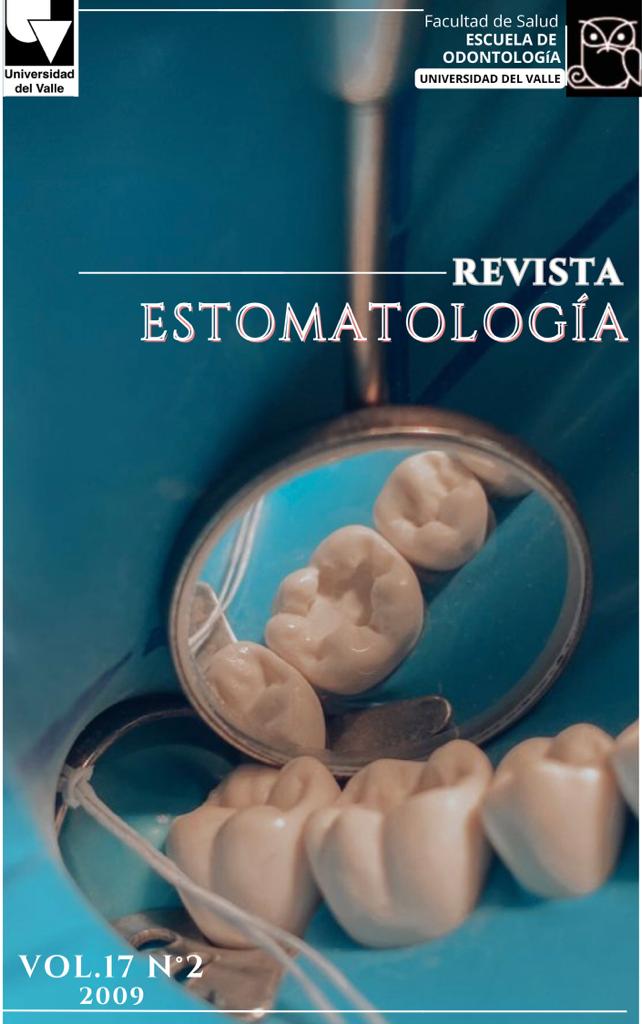Correlation of ten non-metric dental traits between deciduous and permanent molars of three ethnic colombian groups.
Keywords:
dental anthropology ; dental morphology ; morphology ; non-metric dental traits ; deciduous dentition ; permanent dentition ; correlations ;Main Article Content
Summary
Objective: To determine correlations of ten non-metric dental crown traits NMDCT (Carabelli, hipocon2, enamel bridge, metaconule, protostylid, deflecting wrinkle, pattern cusp, cusp number and 6 and 7 cusp) between deciduous second upper (um2) and low (lm2) molars, permanent first upper (UM1) and lower (LM1) molars and permanent second upper (UM2) and lower (LM2) molars were studied. Materials and Methods: This descriptive study determines the correlation of ten NMDCT through of the frequency and variability, observed on 201 dental casts of Cali racially mixed population, 84 dental casts of Puerto Tejada African-Colombian population and 60 dental casts of Colombian Amazons natives. Results: The Colombian Amazon natives showed high correlation in Carabelli and cusp number between um2/UM1; and very high in metaconule and pattern cusp. Cali racially mixed population showed moderated correlation in Carabelli, deflecting wrinkle and pattern cusp between um2/UM1; and high in 6 cusp. And between UM1/UM2/LM1/LM2 moderate in deflecting wrinkle; and high in protostylid, pattern cusp and 6 cusp. Puerto Tejada African-Colombian population showed moderated correlation between UM1/UM2/LM1/LM2 in deflecting wrinkle; and high in protostylid, pattern cusp and 6 cusp. Conclusions: Findings support the proposal of morphogenetic field theory, which exposes that the key tooth in deciduous and permanent molars is um2/lm2 because it retains the basic configuration of contact and number of cusps pattern, so UM1/UM2/LM1/LM2 will vary according to ethnic origin and to the environmental influence of each ofn three studied ethnic groups. Key words: Dental anthropology. Dental morphology. Non-metric dental traits. Deciduous dentition. Permanent dentition. Correlations.
- Camila Perez, Claudia Sanchez, Sandra Moreno, Freddy Moreno, Frequency and variability of dental morphology of temporal and permanent molars in a group of Caucasoid mestizos from Popayán (Cauca, Colombia) , Revista Estomatología: Vol. 25 No. 1 (2017)
- David Acosta, Andrea Melissa Porras, Freddy Moreno, Relation between the facial contour form, the dental arches and the upper central incisors shape in dental students from Universidad del Valle - Cali , Revista Estomatología: Vol. 19 No. 1 (2011)
- Pedro Asprilla, Kevin Franco, Jessica Morales, Freddy Moreno, Morphological characterization of permanent dentition of a group of Afrodescendants at Istmina (Chocó, Colombia) , Revista Estomatología: Vol. 25 No. 2 (2017)
- Liliana Marín, Freddy Moreno, Odontología forense: identificación odontológica. Reporte de casos , Revista Estomatología: Vol. 11 No. 2 (2003)
- Adolfo Contreras, Adriana Jaramillo, Freddy Moreno, Carlos Valencia, First meeting of the research groups of School of Dentistry at the Universidad del Valle “Constructing research strategies.” Opinion article , Revista Estomatología: Vol. 19 No. 2 (2011)
- Freddy Moreno, Sandra Moreno, Molar cusp pattern of human low molars. Literature review , Revista Estomatología: Vol. 24 No. 2 (2016)
- Johanna Aramburo, Angela Zapata, Sugey Zúñiga, Freddy Moreno, Stereomicroscopic analysis of dental materials employed in endodontic exposed to high temperatures , Revista Estomatología: Vol. 19 No. 2 (2011)
- Pedro Castro, Claudia Corral, Felipe García, Pilar León, Carlos Humberto Martínez Cajas, Freddy Moreno, Efficacy of four toothbrushes on removal of plaque with modified Bass technique in Dental Hygiene Students at Cali , Revista Estomatología: Vol. 16 No. 2 (2008)
- Sandra Moreno, Freddy Moreno, Dental Anthropology: clinical importance , Revista Estomatología: Vol. 15 No. 3 (2007)
- Diana Chalapud, Maria Fernanda Mosquera, María Fernanda Pulgarín, Carlos Cruz, Freddy Moreno, Cheiloscopic analysis in dental students of the city of Cali , Revista Estomatología: Vol. 19 No. 1 (2011)
Los autores/as conservan los derechos de autor y ceden a la revista el derecho de la primera publicación, con el trabajo registrado con la licencia de atribución de Creative Commons, que permite a terceros utilizar lo publicado siempre que mencionen la autoría del trabajo y a la primera publicación en esta revista.





